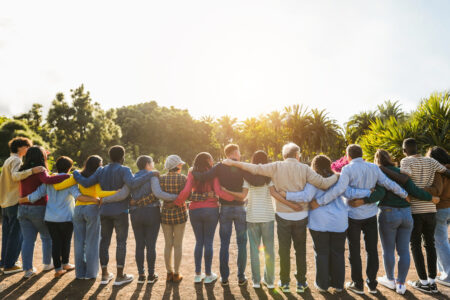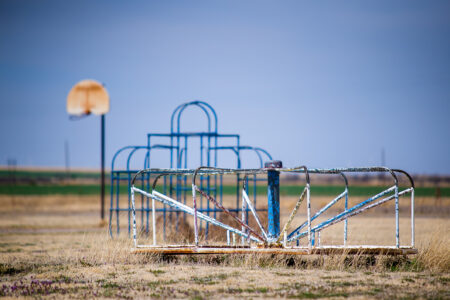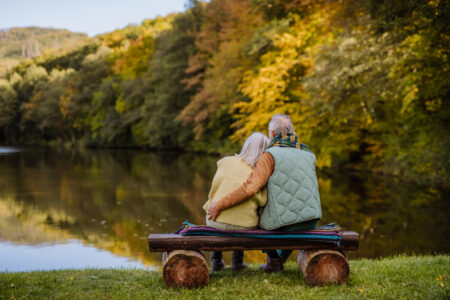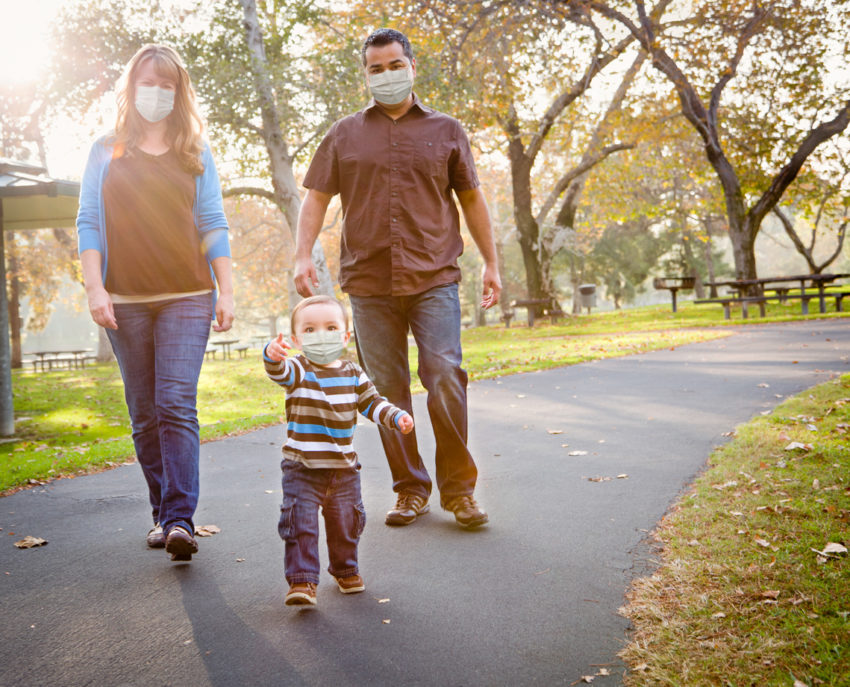
Share On Social!
Access to green, outdoor spaces can make a huge difference in the lives of marginalized groups, especially Latinos.
Parks are essential for public health, climate resilience, and strong connected communities.
Still, 100 million people in the US—including 28 million children—don’t live in a home that is within a 10-minute walk of a park.
The Trust for Public Lands (TPL) knows these facts and is working to improve countless lives through green spaces advocacy — including updating its annual ParkScore rankings.
While there has been some movement in making parks more accessible, people of color still face “major disparities” in park access, according to TPL’s rankings.
“In the 100 most populated cities, neighborhoods where most residents identify as Black, Hispanic and Latinx, American Indian/Alaska Native or Asian American and Pacific Islander have access to an average of 44 percent less park acreage than predominantly white neighborhoods,” writes TPL Equity Director, Ronda Chapman.
What is the ParkScore?
TPL’s annual ParkScore rankings ranks park systems in the nation’s 100 largest cities.
They added equity as a metric for its latest ratings, creating significant shifts in its 2021 index.
“The ParkScore index is the national gold-standard comparison of park systems across the 100 most populated cities in the United States,” the group writes. “Published annually, the index measures park systems according to five categories: access, investment, amenities, acreage, and—new for 2021—equity.”
Green spaces are on the minds of many Americans, many of whom turned to outdoor spaces as a means for activity amid the coronavirus pandemic.
This past year has proved that parks are not just a nicety—they are a necessity.
As Americans endured the health and economic challenges brought on by a global pandemic, the outdoors became a lifeline.
“Local parks from Washington to Tennessee to Virginia saw dramatic upticks in usage from people seeking exercise, safe social connections, and the restorative effects of nature,” TPL writes. “Parks proved their mettle as essential public infrastructure, serving as venues for everything from meal distribution to COVID tests and vaccinations to gathering spaces for protest and mourning.”
The top 10 cities with the best park systems according to TPL, include:
- Washington DC (11% Latino)
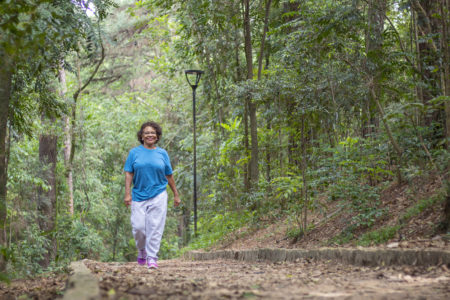
- Baltimore (5.3% Latino)
- Minneapolis (9.6% Latino)
- Arlington, VA (15.6% Latino)
- Chicago (2.8% Latino)
- San Francisco (15.2 % Latino)
- Irving, CA (10.3% Latino)
- Cincinnati (3.8% Latino)
- Seattle (6.7% Latino)
- Portland (9.7% Latino)
What’s clear is the cities with relatively low Latino populations are ranking lower than those with high Latino demographics.
Among the top five cities with the highest Latino populations, most have relatively low ParkScores rankings, these Include:
- New York City (29.1% Latino) — Ranked 11
- San Antonio (64% Latino) — Ranked 60
- Los Angeles (48.5% Latino) — Ranked 71
- Houston (45% Latino) — Ranked 77
- Phoenix (42.6% Latino) — Ranked 82
And inequities aren’t just hitting the big cities, either.
“Similar park space inequities exist in low-income neighborhoods across cities, highlighting the urgent need to center equity in park investment and planning,” TPL’s Chapman wrote.
Why are ParkScores Important?
This year exposed vast inequities across every facet of society, including our park systems.
If you lived within walking distance of a park, you could safely get outside, gather with friends, exercise, and maintain your mental health. Access to nature improves health outcomes.
But if you were one of the 100 million Americans who don’t have a park close to home, you were vying for the same patch of outdoor space as many of your neighbors.
This was often the case for people of color, like Latinos.
The new ParkScores are making waves in cities that have far from perfect rankings, especially when it comes to racial equity, such as Philadelphia. 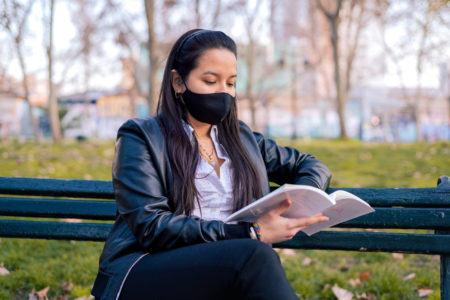
People in the city are beginning to finally talk about these disparities, according to Alex Doty, executive director of the Philadelphia Parks Alliance, a nonprofit advocacy group.
“Historically we’ve looked at Parks and Rec as a burden, instead of seeing it as an asset,” Doty says. “We’re wasting money by not taking advantage of it. We’re wasting a resource that can contribute to mitigating poverty, mitigating climate change, and making our city livable.”
Even in spite of the budget challenges, Doty says he’s encouraged by the Parks and Rec Department’s recent efforts to concentrate what limited staff it has at locations where there’s the greatest need.
“The neighborhoods that are suffering from spikes in gun violence need safe, welcoming spaces outside,” he says. “And that’s what we need to deliver.”
What Does ParkScores mean for Latinos?
The new ParkScores emphasize the need for green space for Latinos.
For example, TPL’s August 2020 report found parks that serve primarily Latinos and others of color are half the size of parks that serve majority White populations.
These parks are also five times more crowded, with hotter temperatures.
“As cities struggle with extreme heat this summer, parks are one of the best ways for residents to find relief,” said Diane Regas, leader of The Trust for Public Land. “We all need and deserve parks—and all of the benefits they provide—all of the time. But during this period of compounded public health emergencies, unequal access to quality parks can be downright dangerous.”
Only 1 in 3 Latinos live within walking distance (<1 mile) of a park.
Park-less Latinos miss out on space for physical activity, social interaction, and stress reduction, according to a Salud America! research review.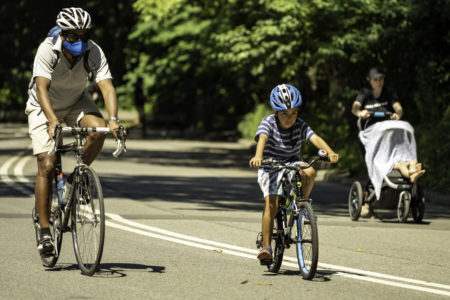
“Distance is a top barrier to Latino access to green spaces. Another barrier is a lack of street, sidewalk, and transit connectivity, as well as a lack of programming and funding issues,” according to the research review.
The COVID-19 pandemic illustrates a rising demand for green spaces, too.
During the pandemic, biking increased 52% over bridges in New York City (29.1% Latino). That’s partially why city leaders are closing streets to cars and opening them to people. Salud America! members even spoke up for more open streets during the pandemic.
Biking increased an average of 151% on trails in Philadelphia (14.5% Latino). On one trail, biking was up 471%. That’s why the Bicycle Coalition of the Greater Philadelphia Area started a petition to city council asking them to ban cars on popular corridors to give people more space to walk and bike.
Park attendance was up 30% to 50% in the most popular state parks in Maine (1.7% Latino), although many have closed visitor centers, camping, and restroom facilities.
Nationwide, trail usage was up 200% in the early months of the pandemic compared to the same period the year before, according to the Rails to Trails Conservancy.
Car traffic is down, too. This reduces air pollution, improves air quality, and saves lives, experts say.
However, traffic death rates were up, revealing the systemic issue of unsafe roads.
Salud America! members are among those continuing to urge transportation engineering improvements.
Keeping parks open and designating car-free streets can help give people the space they need to practice social distancing and stay healthy while preventing coronavirus spread.
How Can You Help?
First and foremost, get your city’s ParkScore. Then share the results with civic leaders, friends, neighbors, and family.
You can also download a Health Equity Report Card, by Salud America! at UT Health San Antonio, and see your local population density, respiratory hazard index, tree canopy coverage, and other health equity issues in your community.
Enter your county name and see how your area compares to the rest of your state, nation.
Then you can email your Health Equity Report Card to elected officials, share it on social media, and use it to make the case to address food insecurity where help is needed most!
GET YOUR HEALTH EQUITY REPORT CARD!
Explore More:
Green & Active SpacesBy The Numbers
33
percent
of Latinos live within walking distance (<1 mile) of a park

